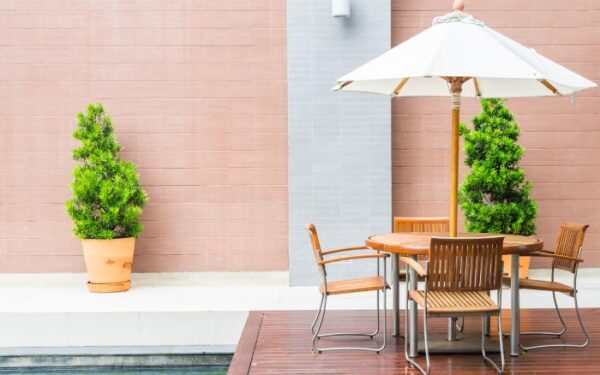5 Types of Flowers You Can Add in a Bouquet

When it comes to crafting bouquets and floral displays, the options are vast.
There exists a wide array of flowers, categorized into four main groups: focal, filler, greenery, and line flowers. Understanding these categories and how they complement each other is crucial in selecting the right combination and achieving a professional design.
Each flower category tends to serve a purpose in creating a harmonious or visually appealing arrangement. Focal blooms capture attention, while line flowers add verticality.
Fillers bridge gaps, and greenery provides structural support to the entire bouquet. If you want to know more about it, you can also visit a company who offers flower delivery in dubai.
Roses
Roses are the most timeless epitome of love and elegance. With a vast array of colors and meanings, these blooms symbolize romance, admiration, and gratitude.
The classic red rose signifies passionate love, while pink represents admiration and gratitude. Yellow roses convey friendship and joy, while white ones epitomize purity and innocence.
Their velvety petals and iconic fragrance make them an essential addition to any bouquet, providing depth and a touch of sophistication.
Lilies
Lilies exude an air of majestic beauty with their striking appearance and enchanting fragrance. These flowers symbolize purity, renewal, and devotion. Available in various types such as Asiatic, Oriental, and Calla, each boasts unique characteristics.
Asiatic lilies offer vibrant colors and upward-facing blooms, while Oriental lilies exude larger, fragrant flowers. Calla lilies, with their trumpet-shaped blossoms, add a touch of sophistication to any arrangement. Their presence in a bouquet adds drama and a sense of regality.
Tulips
Tulips herald the arrival of spring, bringing with them an abundance of colors and a sense of cheerfulness. These flowers symbolize perfect love and are available in an assortment of shades, from bright reds and pinks to serene whites and yellows.
With their sleek, cup-shaped blooms, tulips exude simplicity and elegance. Whether tightly clustered or artistically arranged, tulips lend an air of freshness and vitality to any bouquet.
Peonies
Peonies are the embodiment of romance and prosperity.
These lush, full-bodied blooms with layers of delicate petals exude opulence and grace. Symbolizing good fortune and a happy marriage, peonies come in shades ranging from soft pastels to vibrant corals. Their large, showy blooms make them a centerpiece in bouquets, adding texture, volume, and an undeniable allure.
Sunflowers
Radiating great warmth and happiness, sunflowers are synonymous with joy, longevity, and adoration. These bright, cheerful blooms with their distinctive golden petals and dark centers are a symbol of positivity and strength.
Their sheer size and vibrant hues make them a standout addition to any bouquet, bringing a touch of the summer sun and uplifting spirits with their vivacious presence.
Hydrangea
As summer arrives, gardens come alive with the vibrant presence of large and striking hydrangea bushes. Originating from Eastern Asia or the Americas, this perennial plant boasts over 75 species and 600 cultivated variations, including popular types like mophead, lacecap, oakleaf, and peegee. The color of some hydrangea flowers, whether they turn pink, blue, or remain white, depends on the soil’s acidity or alkalinity.
Mopheads, lacecaps, and oakleaf varieties bloom on last year’s growth and can be pruned in summer after they flower. Conversely, peegee hydrangeas bloom on new growth and are best pruned in late winter before spring arrives.
Daisy
Daisies, a widely cherished flower, thrive across all continents except Antarctica.
They’re part of a vast plant family and historically represent innocence, a symbolism rooted in the Victorian era. The color of a daisy determines its significance, while these flowers thrive best in full sunlight and standard soil conditions.
Their height usually varies from 8 inches to 4 feet based on the species. To care for them, water only during summer when rainfall falls below 1 inch per week.
FAQs – Frequently Asked Questions
How do I choose the right flowers for a bouquet?
- Consider the occasion: Different flowers suit various events (e.g., weddings, birthdays, or celebrations).
- Color scheme: Match or contrast with the theme or recipient’s preferences.
- Seasonal availability: Opt for flowers in season for better quality and affordability.
- Personal meaning: Choose flowers that hold significance or convey a message.
Can I mix different types of flowers in a bouquet?
Absolutely!
Mixing various flowers adds depth and visual interest. Consider combining textures, sizes, and colors for a stunning arrangement. Just ensure they complement each other well.
How do I make a bouquet last longer?
- Trim stems: Cut at an angle and place in water immediately.
- Change water regularly: Refresh every day to prevent bacterial growth.
- Remove wilted flowers: This keeps the bouquet looking fresh.
- Use flower food: Follow instructions on the packet for longevity.
Any flower choices that suit allergy sufferers?
Opt for hypoallergenic flowers like roses, daffodils, or snapdragons. These are less likely to trigger allergies compared to pollen-heavy flowers like sunflowers or daisies.





